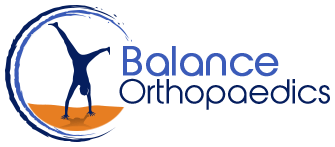Shoulder Separation
What is shoulder separation?
Acromioclavicular joint (AC joint) dislocation or shoulder separation is one of the most common injuries of the upper arm. It involves separation of the AC joint and injury to the ligaments that support it. The AC joint forms where the clavicle (collarbone) meets the shoulder blade (acromion).
Causes of shoulder separation
It commonly occurs in young athletes and results from a fall directly onto the shoulder. A mild shoulder separation is said to have occurred when there is AC ligament sprain that does not displace the collarbone. In more serious injuries, the AC ligament tears and the coracoclavicular (CC) ligament sprains or tears slightly, causing misalignment in the collarbone. In the most severe shoulder separation injury, both the AC and CC ligaments tear, and the AC joint is completely out of its position.
Symptoms of shoulder separation
Symptoms of a separated shoulder may include shoulder pain, bruising or swelling, and limited shoulder movement.
Diagnosis of shoulder separation
The diagnosis of shoulder separation is made through a medical history, physical exam and X-ray.
Treatment of shoulder separation
Conservative treatment options
Conservative treatment options include rest, cold packs, medications and physical therapy.
Surgery
Surgery may be an option if pain persists or if you have a severe separation.
Anatomic reconstruction
Of late, research has been focused on improving surgical techniques used to reconstruct the severely separated AC joint. The novel reconstruction technique that has been designed to reconstruct the AC joint in an anatomic manner is known as anatomic reconstruction. Anatomic reconstruction of the AC joint ensures static and safe fixation and stable joint functions. Nevertheless, a functional reconstruction is attempted through the reconstruction of the ligaments. This technique is done through an arthroscopically-assisted procedure. A small open incision will be made to place the graft.
This surgery involves replacement of the torn CC ligaments by utilising allograft tissue. The graft tissue is placed at the precise location where the ligaments have torn and fixed using bio-compatible screws. The new ligaments gradually heal and help restore the normal anatomy of the shoulder.
Postoperative rehabilitation includes the use of a shoulder sling for 6 weeks, followed by which physical therapy exercises should be done for 3 months. This helps restore movement and improve strength. You may return to sports only after 5-6 months after surgery.
